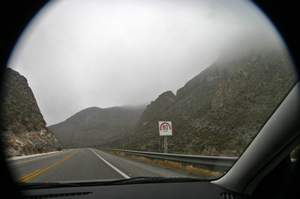Driving in Mexico: More of an Art than a Science
- Last Updated: February 25, 2025 by Al Barrus
- Categories:
- Driving to Mexico
 If you're planning a trip south of the border, my hat goes off to you. This is a great way to get a unique experience that you won't find inside of the tourist traps. In the U.S. the traffic system is more rigidly followed, for the most part, than it is in the United Mexican States.
If you're planning a trip south of the border, my hat goes off to you. This is a great way to get a unique experience that you won't find inside of the tourist traps. In the U.S. the traffic system is more rigidly followed, for the most part, than it is in the United Mexican States.
You will notice the change in traffic climate as soon as you cross the border. You will likely see Mexican Army troops at the border crossing. Make sure you have your documents to get yourself a tourist visa or FMM, and also a permit for your car if you plan to go further into the country. There will be checkpoints later on for these permits.
Most of the border cities are a bit more dangerous because of the drug trade. I would not recommend driving around these towns after dark.
Most of the traffic signs familiar to Americans exist in Mexico. You'll see stop signs that say "Alto." They aren't placed as uniformly as the American versions, so you need to look for them. You must come to a complete stop at these signals, a lot of Mexican citizens do not stop and get away with it, but tourists often get tickets for not doing so.
One-way streets are much more common in Mexico. As a new driver in Mexico I found myself accidentally going the wrong way down streets on a daily basis. The one-way signs are smaller, subtler and sometimes not even posted. If you're not sure, look for what direction parked cars are facing. If the street isn't busy and you know you're going the wrong way just flip on your hazard lights. The hazard blinkers are used much more liberally, and with gringo plates you can get away with it, especially since there are fewer police in Mexico.
Speaking of police, that's a totally different dynamic than in gringo-land: much less of a presence than up north. The transito police, those that deal with traffic, don't even carry firearms. In some cities they have checkpoints late at night or on the weekends. You have to present your ID and give them a whiff of your breath to make sure you haven't been drinking.
If you get pulled over, contrary to popular belief, you should avoid paying a bribe (or mordida). We've written a blog post that tells specifically how to deal with the Mexican police if you are pulled over.
There are many more points to be aware of to be safe while driving here, but don't let it deter you. The highways and bi-ways of this wonderful country are comparably safe. And don't forget to buy auto insurance before you leave the U.S.!